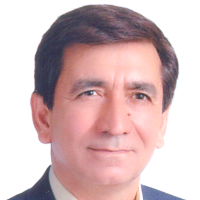Effects of different drying methods on drying time and some active substances of two populations of Tarragon (Artemisia dracunculus L.)
In order to study the effects of different drying methods including oven, microwave and ambient (shade condition) on drying time, essential oil content, antioxidant activity and phenol compound of two populations of Tarragon (Artemisia dracunculus L.), two separate experiments were carried out on two populations (Mashhad and Nishabur). The experiment was performed in a completely randomized design with three replications and 13 drying treatments (oven temperatures: 40, 50, 60 and 70 °C, six microwave powers: 100, 180, 300, 450, 600 and 900 w, shade drying and combination of drying with microwave (600 and 900 w) and shade drying). In addition, a comparison was performed between fresh sample and the mentioned treatments. Results showed that moisture content and measured active substances were different between studied populations. In both experiments, the longest drying time (about 30 hours and 32 h for Mashhad and Nishabur population, respectively) and the shortest drying time (about 5 minutes) was obtained at ambient temperature and 900 w microwave power treatments, respectively. In both experiments, the highest essential oil content (2.27 and 3.2% for Mashhad and Nishabur population, respectively) was obtained from fresh samples and then ambient temperature and microwave 900 w treatments. Essential oil content was decreased by increasing drying temperature. Essential oil content was in an average in all combination treatments. The highest antioxidant activity (82.5 and 81.8% in Mashhad and Nishabur population, respectively) was obtained by fresh samples while the lowest amount was obtained for Mashhad (60.7%) and Nishabur (53%) populations in ambient temperature and in 40°C oven dry, respectively. Maximum phenol compound was recorded for Mashhad population (165 mg GA/g DW) in 600 w microwave power and Nishabur population (524/7 mg GA/g DW) in 900 w microwave power, respectively
-
Feasibility of introducing medicinal plants into the cultivation pattern and feasibility assessment based on Bolin's logic (Chenaran county, Razavi Khorasan province)
Zari Afshar, Maryam Ghasemi *,
Arid regions Geographic Studies, -
Effect of Biochar Amendment and Irrigation Treatments on Biochemical Attributes and Morphological Criteria of Basil (Ocimum basilicum L.) Using Central Composite Design
A. Noroozi, P. Rezvani Moghaddam, M. Hashemian*, S. Khorramdel
Journal of Agricultural Science and Technology, May 2023


